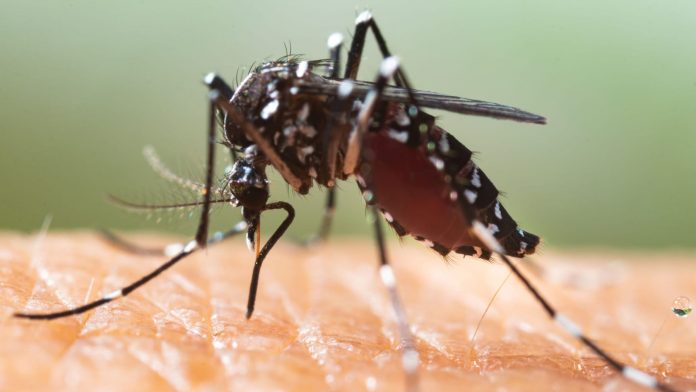What about our native mosquitoes and where are immigrant species spreading? To investigate this, biologists are asking for your help.
Did you know that there are around 3,500 species of mosquitoes worldwide? And that 52 species have been detected in Germany alone? We humans often find mosquitoes to be a nuisance, but they are a very important part of the food chain.
Researchers from the Leibniz Center for Agricultural Landscape Research (ZALF) and the Friedrich Loeffler Institute (FLI) study and analyze mosquito populations in Germany. This should also help track down the Asian tiger mosquito, which is invasive and can be dangerous to us. Everyone can help with this – with the mosquito atlas. How to catch mosquitoes for research.
Why are mosquitoes so interesting for science?
For many years, the study of mosquitoes has been neglected in Germany, meaning that basic information about the occurrence and distribution of different species is missing. In times of globalization and the climate crisis, the introduction and colonization of non-native mosquito species is encouraged. Our native mosquitoes also have the ability to transmit pathogens. It is therefore particularly important to know which species of mosquitoes are currently occurring in Germany, how they are geographically distributed and whether their seasonal occurrence has changed.
This is how you support mosquito research – step by step
- Catch a mosquito without hurting it, for example by placing a glass over it.
- Then place the container with the captured mosquito in the freezer overnight.
- Now the mosquito can go on its journey: Fill it into a shatterproof smaller container made of cardboard or plastic, without any additional padding material. Pack the whole thing securely in an envelope or small package and don't forget to include the completed submission form.
- Your signature on the data protection declaration is also very important, as it is required so that we can respond to you.
- After the mosquito has arrived at ZALF, the mosquito is identified to the species level and the finding is entered into the mosquito atlas. “The sender then receives a reply with information about which mosquito was sent, where this mosquito breeds and what, if necessary, can be done to combat the presence of mosquitoes in their personal environment,” explains biologist Dr. Doreen Werner.
Please send your mosquito shipment to the following address:
Leibniz Center for Agricultural Landscape Research
“Mosquito Atlas”
Eberswalder Straße 84m
15374 Müncheberg
Please note that due to the limited project budget, postage and packaging costs cannot be covered. The project is not limited.


